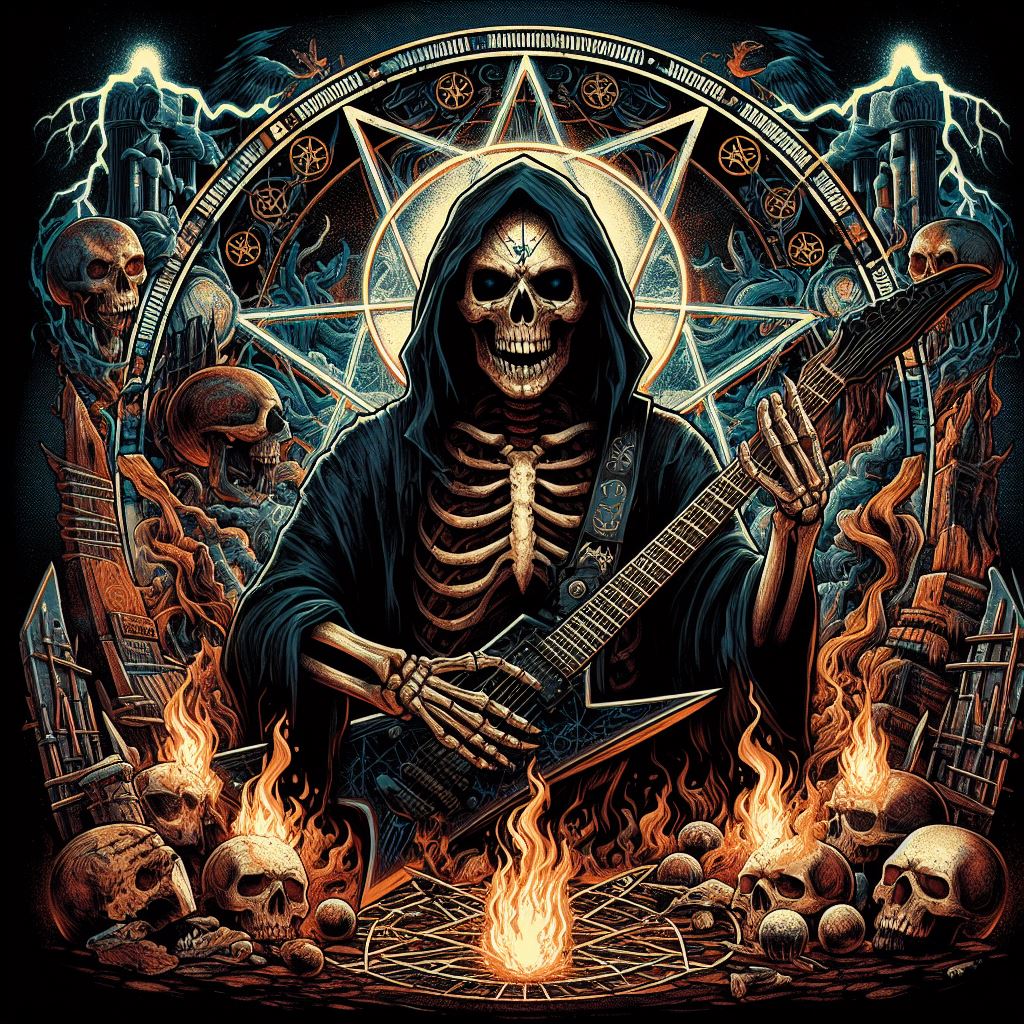Emerging from the unlikely breeding ground of Des Moines, Iowa, Slipknot isn’t your typical metal band. Formed in 1995 by Shawn Crahan, Anders Colsefni, and Paul Gray, Slipknot quickly carved a niche for themselves with their aggressive sound, unsettling theatrics, and a revolving door of masked members.
The band’s early years were a whirlwind of lineup changes. Originally called The Pale Ones, they experimented with various vocalists and guitarists before Joey Jordison, a drumming prodigy, joined and shifted Crahan to percussion. It was Jordison who suggested the name Slipknot, inspired by a song they had written.
Their signature visual identity also began to take shape. Crahan, known for his theatricality, started wearing a clown mask during performances, a trend that soon infected the entire band. These grotesque masks, each a unique reflection of the wearer’s inner turmoil, became a defining aspect of Slipknot’s image.
1996 saw the release of their first offering, “Mate. Feed. Kill. Repeat.” – a raw, self-produced demo that showcased their brutal sound. It wasn’t until 1997, however, that the final piece of the puzzle fell into place with the arrival of vocalist Corey Taylor. Taylor’s powerful voice and songwriting prowess added a melodic dimension to Slipknot’s sonic assault, creating a potent counterpoint to the crushing guitars and Jordison’s relentless drumming.
Finally, with a solidified lineup of nine – a number significant in their mythology – Slipknot unleashed their self-titled debut in 1999. The album was a critical and commercial success, capturing the band’s furious energy and dark lyrical themes that explored anger, depression, and societal alienation. Songs like “Wait and Bleed” and “Surfacing” became anthems for a generation of disaffected youth, propelling Slipknot to mainstream recognition.
The follow-up, 2001’s “Iowa,” was even more brutal and introspective, delving into themes of self-harm and psychosis. The album was met with controversy due to its graphic content, but it further cemented Slipknot’s status as a force to be reckoned with.
Throughout the 2000s, Slipknot continued to push boundaries. Their live shows were legendary for their chaotic energy, often featuring fire, pyrotechnics, and mosh pits so intense they resembled war zones. They headlined major festivals like Ozzfest and toured relentlessly, amassing a devoted fanbase known as “Maggots.”
However, the band wasn’t immune to internal struggles. In 2010, bassist Paul Gray, one of the band’s founding members, tragically passed away from a drug overdose. This devastating loss sent shockwaves through the metal community and forced Slipknot to re-evaluate their future.
After a hiatus, they returned in 2014 with “.5: The Gray Chapter,” an album dedicated to Gray’s memory. The music reflected a newfound maturity while retaining their signature intensity. Lineup changes continued, with the departure of longtime guitarist Jim Root and the dismissal of percussionist Chris Fehn.
Despite the challenges, Slipknot remains a potent force. Their latest album, “We Are Not Your Kind” (2019), showcased their continued evolution, incorporating elements of electronica and experimentation alongside their trademark aggression.
Through lineup shifts, personal tragedies, and ever-evolving music, Slipknot has carved a unique path in the metal scene. Their commitment to artistic vision, combined with their relentless live performances, has secured their place as one of the most important and influential metal bands of the 21st century.

Leave a Reply
You must be logged in to post a comment.